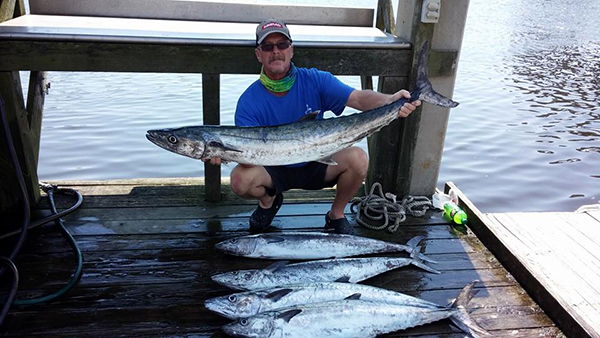NEWS
U.S Initiates Prototype System to Gauge National Marine Biodiversity

Above: NASA satellite data of the marine environment will be used in prototype marine biodiversity observation networks to be established in four U.S. locations, including the Florida Keys, pictured here. Photo Credit: USF/WHOI/MBARI/NASA
NASA & NOAA marine biodiversity network research grant announced. Mitchell Roffer, Ph.D. is part of this research being lead by Frank Muller-Karger (Ph.D.) from the University of South Florida.
The National Oceanic and Atmospheric Administration (NOAA) and NASA are funding three demonstration projects that will lay the foundation for the first national network to monitor marine biodiversity at scales ranging from microbes to whales. The U.S. Department of the Interior’s Bureau of Ocean Energy Management (BOEM) also plans to contribute.
The projects, funded at approximately $17 million during the next five years, subject to the availability of funds, will demonstrate how a national operational marine biodiversity observation network could be developed. Such a network would serve as a marine resource management tool to conserve existing biodiversity and enhance U.S. biosecurity against threats such as invasive species and infectious agents.
The three demonstration marine biological observation networks will be established in four locations: the Florida Keys; Monterey Bay and the Santa Barbara Channel in California; and on the continental shelf in the Chukchi Sea in Alaska.
PLEASE CLICK HERE for more information on this research grant announcement on our website now…
Brevard Seaweed Bloom May be a Growing Problem
The twisted, brown mess carpeting Space Coast beaches this week could be too much of a good thing gone awry.
And no one knows why.
Massive amounts of the open-ocean algae — called Sargassum — has been annoying anglers along the eastern United States. A similar widespread explosive growth of the stuff clogged up fisheries, shorelines and tourism in 2011.
Biologists aren’t sure why so much of the plant grew then, or now.
“From the Caribbean all the way to Massachusetts,” Mitch Roffer, president of Roffer’s Ocean Fishing Forecasting Service, Inc., said of the seaweed’s spread.

Above: A couple enjoys the beach at the Patrick Air Force Base beach just north of Pineda Causeway, with mounds of seaweed piled on the beach behind them. Photo Credit: Malcolm Denemark/Florida Today
Sargassum Identification Guide
Two species of sargassum are found in the Carribean: Sargassum natans and Sargassum fluitans. The photos and drawings on our website in the article linked below provide assistance in differentiating between the two.
Please click HERE to view the sargassum identification guide now on our website…

Above: Sargassum natans, left, and Sargassum fluitans, right – Photo Credit: GCRL
Vicious Great White Shark Battle Caught on Camera
Adam Malski, 33, was on a diving trip to learn more about the predators in the waters around theNeptune Islands. He was watching 4.8 meter Gilbert, a shark known to locals, from the deck of a boat as Gilbert swam up to eat some bait — when a second, smaller shark appeared.
“The day where the shark attacked the other was surreal. I asked the dive master and skipper of the boat what would happen if a smaller shark got in the way of a larger shark,” Malski told The Telegraph.
“The skipper responded, ‘The big shark would take the smaller one down’. Literally six seconds later, that amazing scene was witnessed by me, the skipper and the dive master. They had never seen anything like it before. I believe that it is extremely rare footage, as great whites are elusive and still largely unknown creatures.”
Please click HERE to read more about this Great White Shark battle on our website…

Above: Two great white sharks duking it out, literally fang to fang, have been captured on camera 80km (50 miles) off the coast of South Australia. Photo Credit: Screenshot by Michelle Starr/CNET
Updated Catch Reports Section of ROFFS™ Website

Nice Catch! Fish caught earlier this week offshore of NC by ROFFS™ Client Jeff Reid and David Wicker fishing aboard “Lucky Stripe”. (See Photo Above.)
Please click HERE to view last week’s catch reports…
If you do not want to wait for our next Fishy Times newsletter, please visit us in the meantime to get all your fishing news on Facebook, Twitter, YouTube and on the web. Safe and successful fishing until next time!






